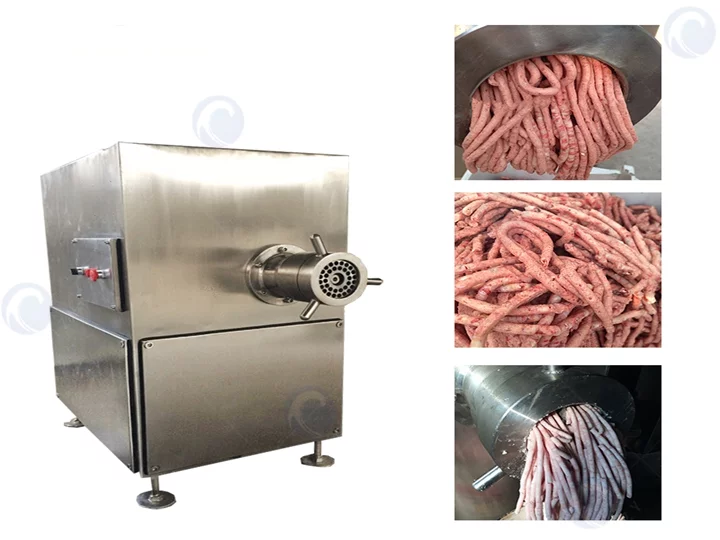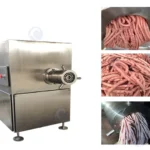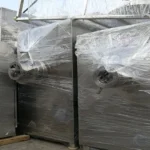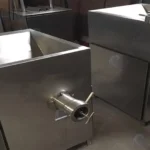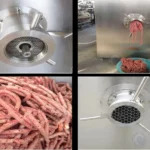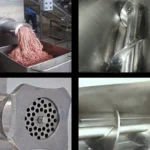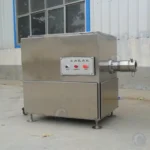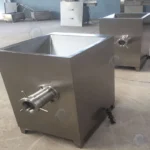Automatic Meat Grinder
| Model | TZ-100 |
| Capacity | 300-500kg/h |
| Power | 5.5kw |
| Voltage | 380v, 50hz |
| Weight | 190kg |
| Size | 900*600*960mm |
You can now ask our project managers for technical details
The Automatic Meat Grinder is a vital tool for efficient meat processing, designed to handle frozen or fresh meat without the need for thawing, preserving its nutrition and flavor. Equipped with powerful motors and high-quality stainless steel components, this machine ensures durability, hygiene, and ease of cleaning.
It processes meat into various granule sizes to meet diverse production needs, making it ideal for sausages, meatballs, and other food products. Widely used in meat processing plants, restaurants, and food manufacturers, the grinder’s versatility and robust performance cater to high-volume, professional operations.
Meat grinder machine for sale
The meat grinder machine is a versatile tool widely used in industries producing sausages, ham, lunch meat, meatballs, pet foods, and other meat products.
Its compact design ensures easy operation and maintenance, with key components including a working screw, pressing chamber, extrusion sleeve, hopper, discharge port, motor, universal wheels, main knife seat, and casing. The working screw is crafted from high-strength stainless steel, ensuring durability, deformation resistance, and stable performance.
Additionally, all parts of the machine are made from food-grade stainless steel, meeting stringent hygiene standards. This efficient machine processes raw meat into granular fillings, catering to diverse production requirements.
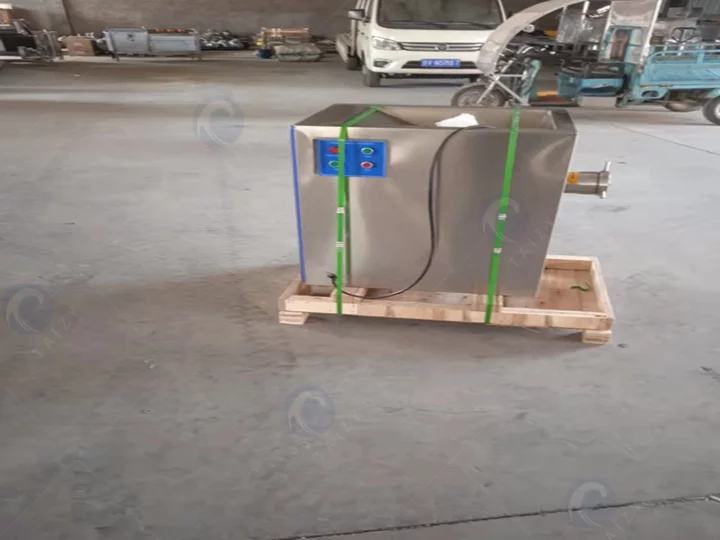
Key features of the meat grinder
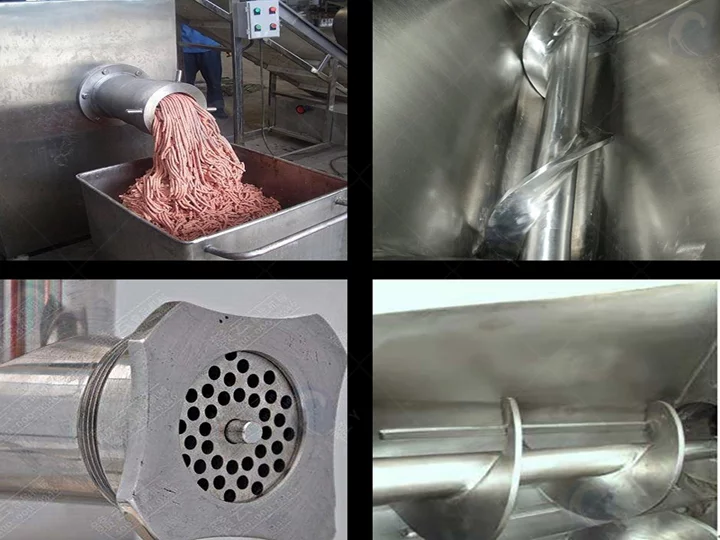
- Motor power. High-powered motors ensure quick and efficient grinding, capable of handling tougher cuts and larger quantities of meat with ease.
- Speed control. Adjustable speed settings allow for customized grinding, such as slower speeds for finer results.
- Reverse function. Equipped with a reverse feature to quickly clear blockages by reversing the auger’s direction.
- Die plates. Includes multiple perforated die plates to customize the size of ground meat according to specific needs.
- Versatility. Designed for a wide range of applications, including cutting frozen meat, ensuring high production efficiency while saving time and effort.
- Freshness preservation. The rapid cutting process minimizes temperature rise, maintaining freshness and extending the shelf life of meat products.
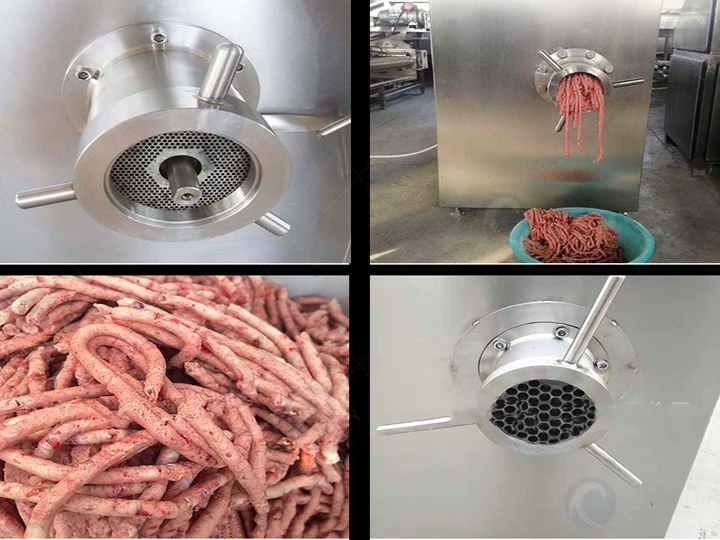
Working process of the meat grinding machine
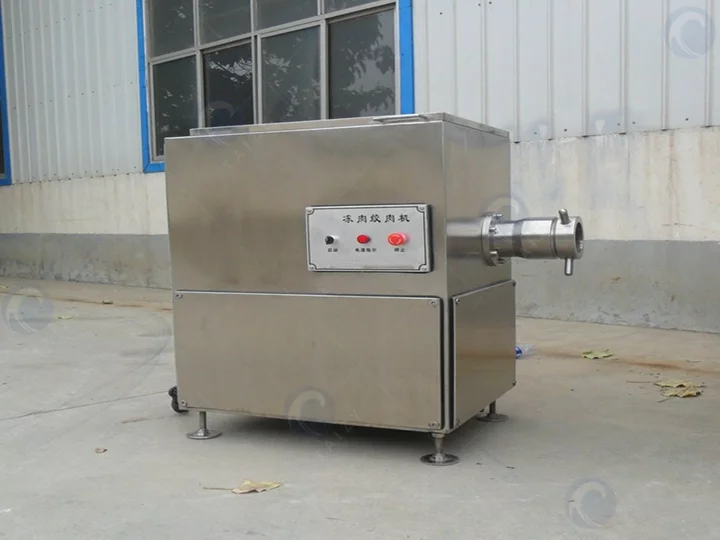
- Preparation. Ensure the meat and any additional ingredients are properly prepared, such as trimming excess fat or removing bones.
- Assembling the grinder. Attach all necessary components, including grinding plates and blades, and ensure the grinder is securely assembled.
- Feeding the meat. Place prepared meat pieces into the hopper and use a food pusher, if available, to gently guide the meat into the grinder.
- Grinding process. Turn on the grinder to power the auger, which pushes the meat toward the cutting blade. The blade chops the meat as it passes through the grinding plate holes.
- Choosing coarseness. Adjust the coarseness of the grind by selecting a grinding plate with finer or larger holes, depending on the desired texture.
- Collecting ground meat. The processed meat is expelled from the grinder head into a container or surface, ready for use in recipes.
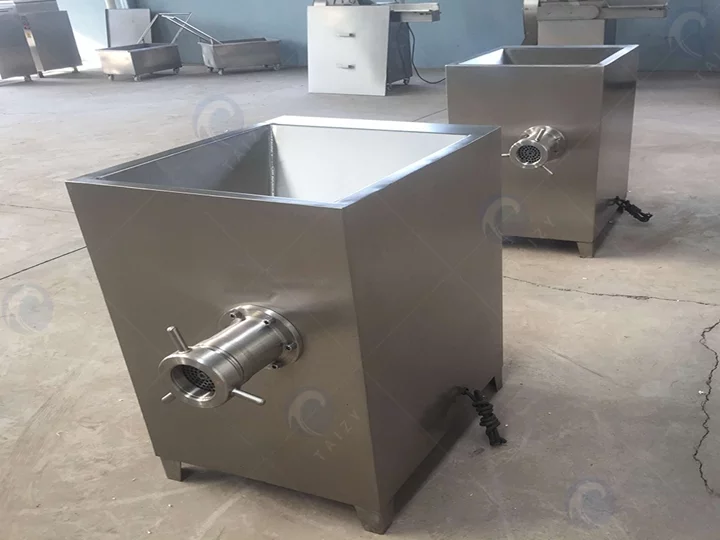
Maintenance of the meat grinder
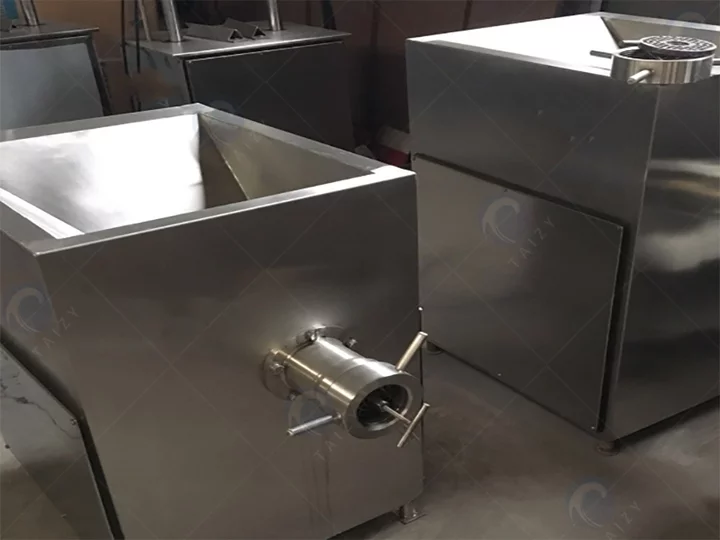
- Regular cleaning. Disassemble the grinder after each use and wash all removable parts with warm, soapy water, focusing on the grinding plate, blades, and auger.
- Remove residue immediately. Clean off meat or food residue promptly, and soak stubborn residues in warm, soapy water before cleaning.
- Avoid dishwasher use. Handwashing is generally recommended to prevent damage or deterioration, even if some parts are dishwasher-safe.
- Thorough drying. Ensure all parts are completely dried after washing to avoid rust or bacterial growth before reassembling the grinder.
- Inspect for wear and damage. Regularly check components for signs of wear, rust, or damage, and replace worn or damaged parts promptly.
- Lubrication. Apply a food-grade lubricant to moving parts like the auger and gearbox to ensure smooth and efficient operation.
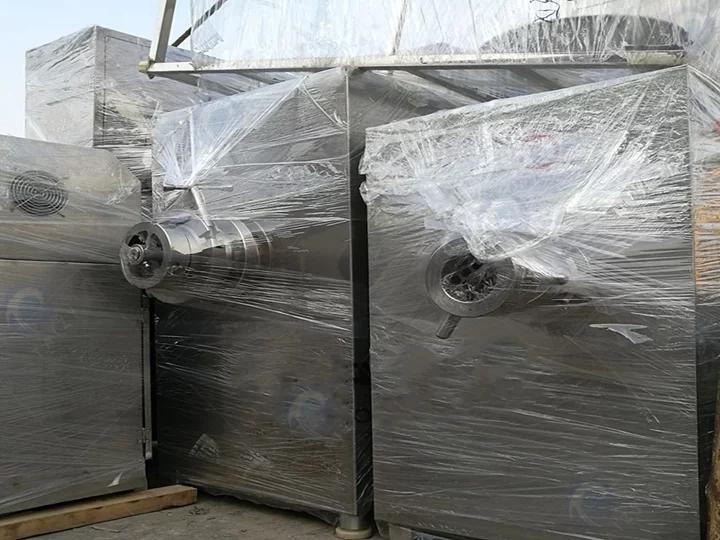
Parameters of the meat grinder
| Model | Capacity | Power | Size |
| TZ-100 | 500kg/h | 5.5KW | 980*550*900MM |
| TZ-120 | 1500kg/h | 7.5KW | 960*550*1080MM |
| TZ-160 | 2000-3000kg/h | 15KW | 1630*1100*1450MM |
Conclusion
Our meat grinder machine is a reliable solution for efficient and high-quality meat processing, making it an essential tool for your business. Designed for durability and performance, it caters to diverse meat grinding needs with precision and ease.
Additionally, our company offers a wide range of meat processing equipment. Contact us today to learn more, request a quote, and explore the best solutions for your meat processing needs!

